During the official visit to Japan of National Assembly Chairman Tran Thanh Man, Minister of Natural Resources and Environment Do Duc Duy visited the Meguro waste-to-energy plant (Tokyo, Japan).
Joining the delegation, Minister Do Duc Duy was accompanied by Ha Tinh Provincial Party Secretary Hoang Trung Dung and leaders of units under the Ministry of Natural Resources and Environment.
Here, Deputy Minister Matsuzawa, in charge of global environmental issues, Ministry of the Environment of Japan, introduced to the Vietnamese delegation about the urban waste management policy and the operation of the Meguro Waste-to-Energy Incineration Plant.
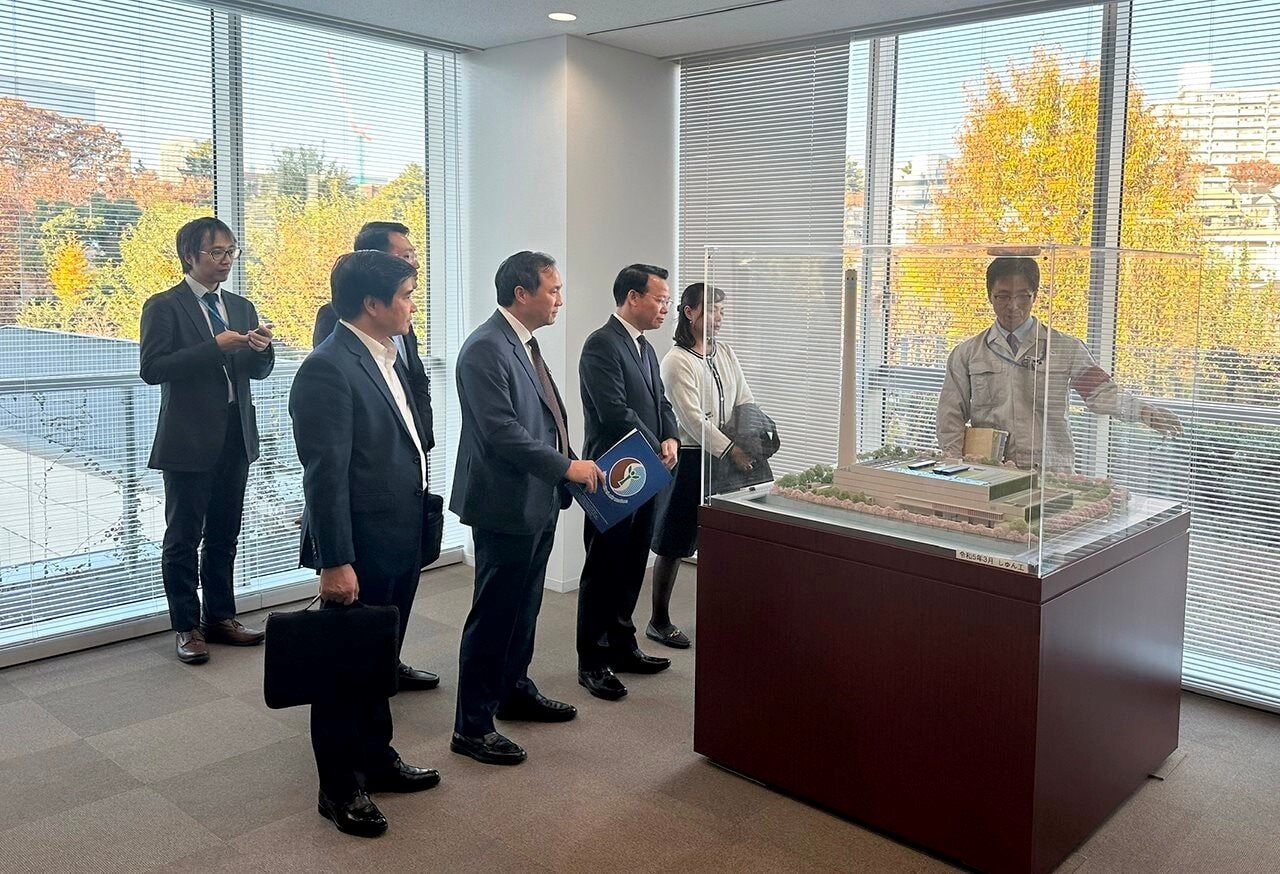 Minister of Natural Resources and Environment Do Duc Duy and Ha Tinh Provincial Party Secretary Hoang Trung Dung visited the Meguro waste-to-energy plant (Tokyo, Japan).
Minister of Natural Resources and Environment Do Duc Duy and Ha Tinh Provincial Party Secretary Hoang Trung Dung visited the Meguro waste-to-energy plant (Tokyo, Japan).Accordingly, the Meguro Waste-to-Energy Incineration Plant located in Meguro Ward, Tokyo, is one of the most modern waste treatment facilities in Japan today. The plant is currently using advanced combustion technology "JFE hyper 21 - Continuous combustion" to treat household waste, helping to reduce the amount of landfill waste and utilize the generated heat to generate electricity.
The plant's treatment and incineration rate can now reach 99% of the incoming waste, leaving only about 1% of waste discharged into the environment, significantly saving land and minimizing negative impacts on the environment.
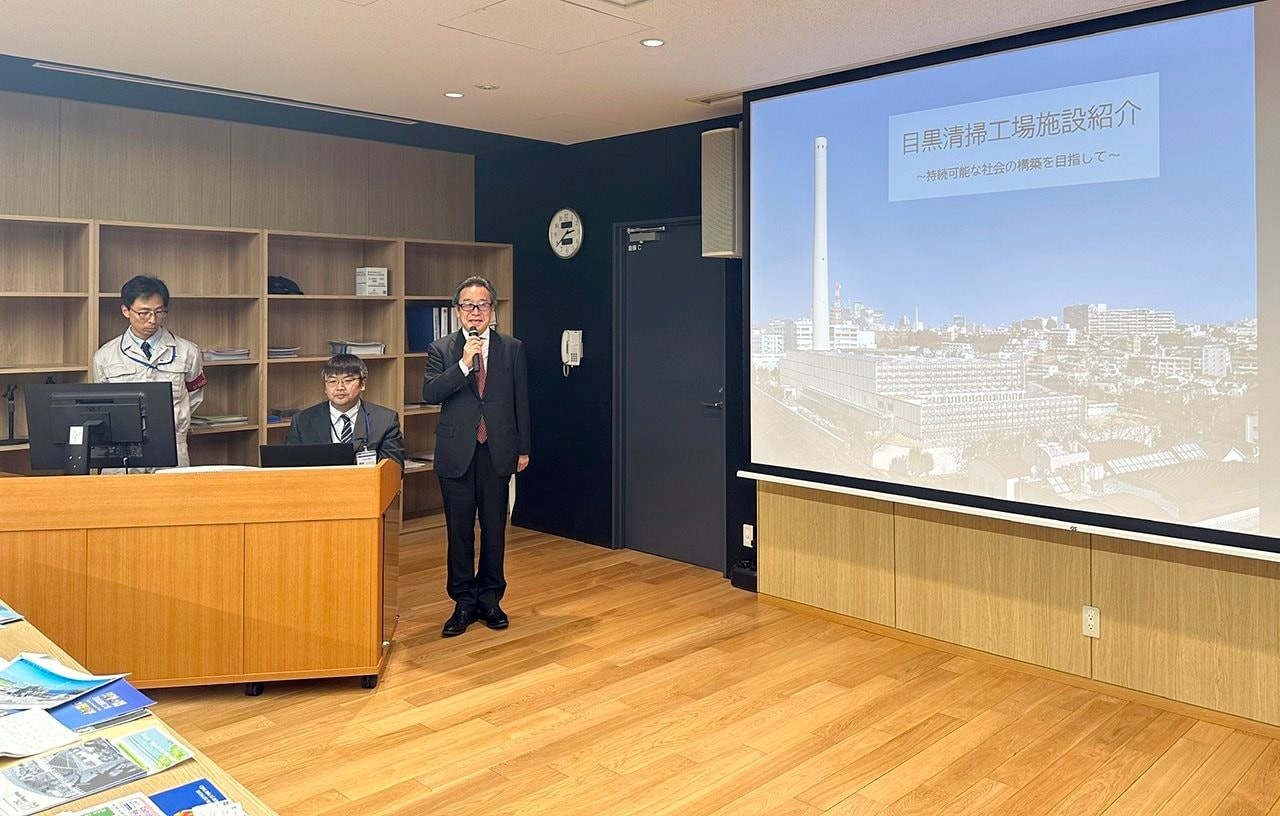 Vice Minister Matsuzawa, in charge of global environmental issues, Ministry of the Environment of Japan, introduced to the Vietnamese delegation about urban waste management policy and the operation of Meguro Waste-to-Energy Plant.
Vice Minister Matsuzawa, in charge of global environmental issues, Ministry of the Environment of Japan, introduced to the Vietnamese delegation about urban waste management policy and the operation of Meguro Waste-to-Energy Plant.The plant currently receives and processes household waste from surrounding areas of Tokyo. The Tokyo Environmental Agency requires residents to sort waste at source into burnable, non-burnable, recyclable, and other types. Burnable waste, including food scraps, dirty paper, and non-recyclable plastic products, is collected on a daily basis and sent to incineration plants such as the Meguro Plant for further sorting before incineration.
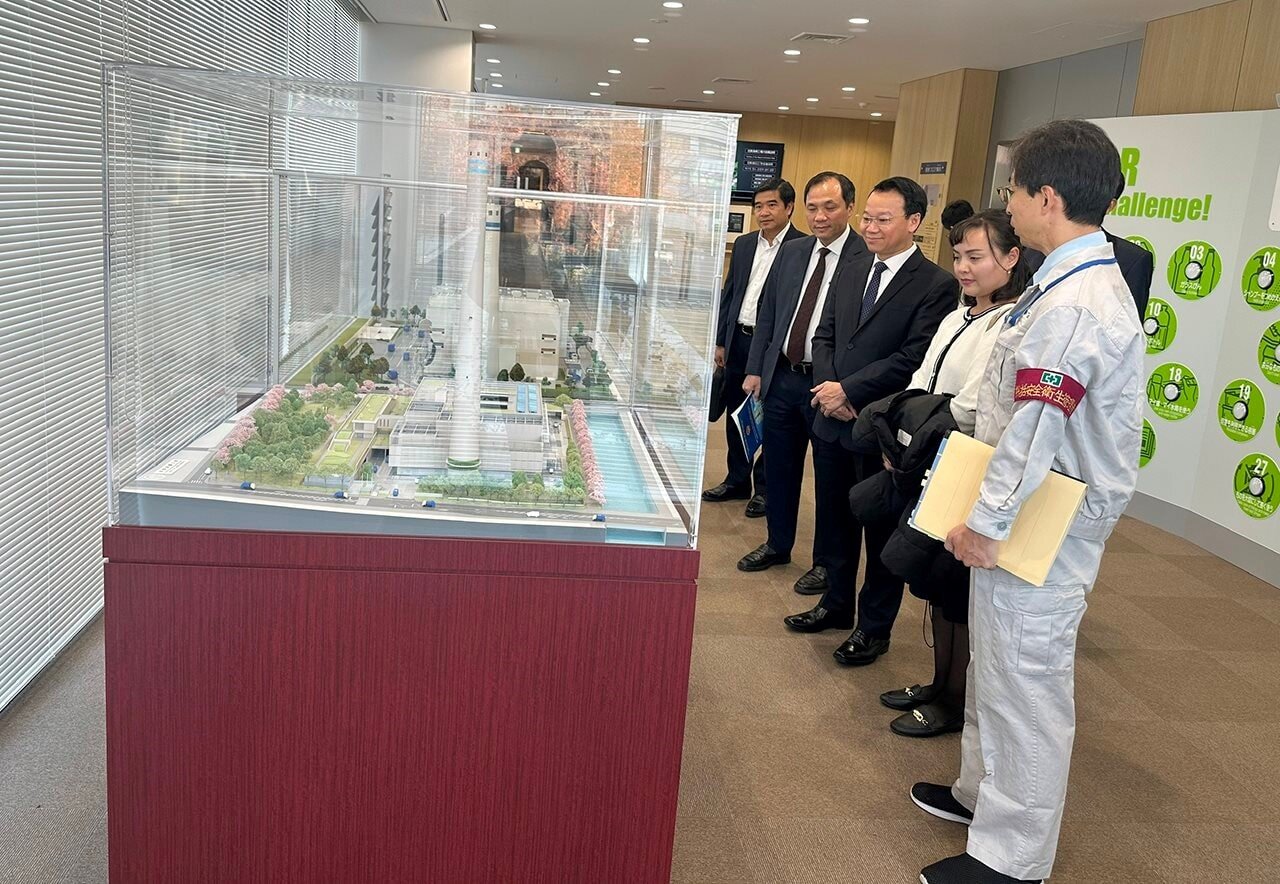 Minister Do Duc Duy assessed that the Meguro waste incineration plant not only plays an important role in waste treatment but also contributes to providing energy for the city through generating electricity from the heat generated during the waste incineration process.
Minister Do Duc Duy assessed that the Meguro waste incineration plant not only plays an important role in waste treatment but also contributes to providing energy for the city through generating electricity from the heat generated during the waste incineration process.The plant operates on the principle of crushing - pressing - burning. After collection, the garbage is crushed and pressed into blocks to reduce the volume of the garbage to 1/20 (to save space in the incinerator), then burned at high temperature. This process also ensures that the exhaust gas is treated so as not to harm the environment and human health.
In terms of design, the Factory is designed with an allowable height and a stepped structure to ensure a harmonious and friendly landscape structure when viewed from the outside. Inside, the Factory plants trees and maximizes greenery to create a “green buffer zone” between the Factory and the residential area and Meguro River, while also building sound-absorbing walls to minimize noise generated by waste collection vehicles and incinerators.
 Minister Do Duc Duy and Deputy Minister Matsuzawa exchanged views on the factory grounds.
Minister Do Duc Duy and Deputy Minister Matsuzawa exchanged views on the factory grounds.Minister Do Duc Duy acknowledged and assessed that the Meguro incineration plant not only plays an important role in waste treatment but also contributes to providing energy for the city through generating electricity from the heat generated during the incineration process. Deputy Minister Matsuzawa said that this is part of Tokyo's overall strategy to build an effective and sustainable waste management system, towards a circular economy.
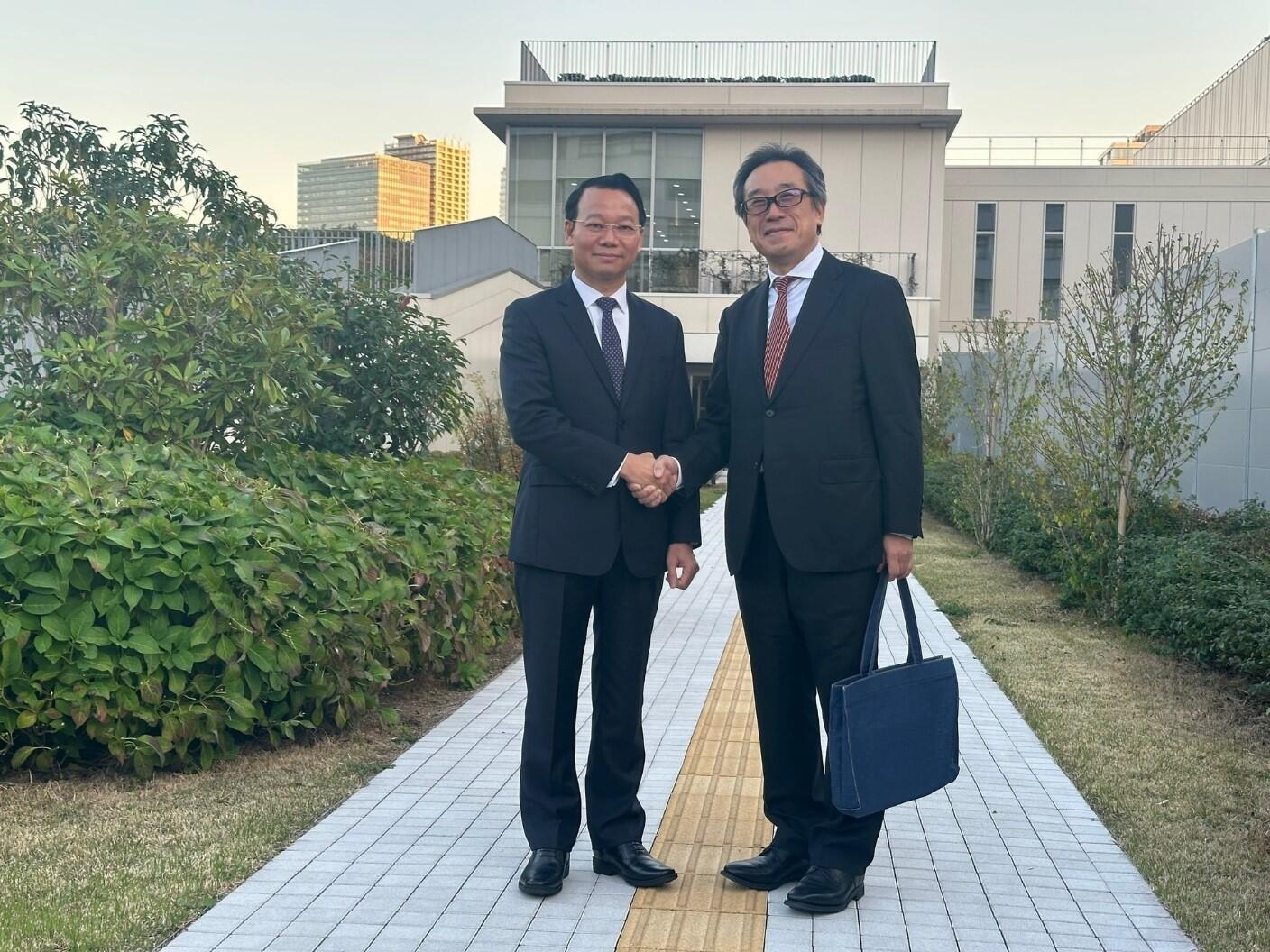 Minister Do Duc Duy and Deputy Minister Matsuzawa took a souvenir photo at the factory campus.
Minister Do Duc Duy and Deputy Minister Matsuzawa took a souvenir photo at the factory campus.Previously, Minister Do Duc Duy accompanied National Assembly Chairman Tran Thanh Man in a working session with the Japan Federation of Economic Organizations (Keidanren) chaired by the two co-chairs of the Japan-Viet Nam Economic Committee of Keidanren.
The meeting achieved many practical results for businesses and localities of the two countries. Through the meeting, businesses and localities of the two sides took advantage of the opportunity to further strengthen exchanges and cooperation in various fields, promote the strengths of each side, contribute to promoting the economic relations between Vietnam and Japan, continue to be a bright spot in bilateral relations for mutual development in the coming time.
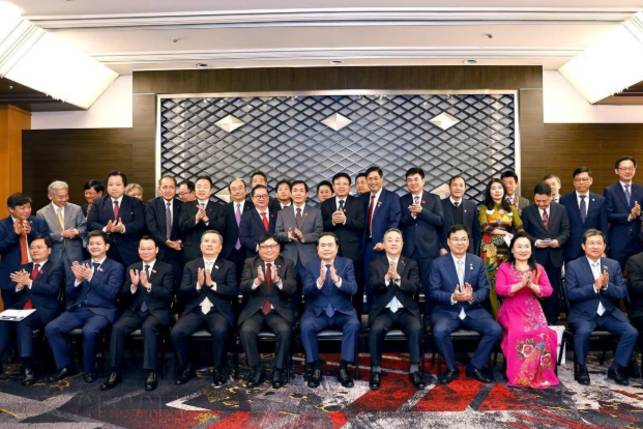 National Assembly Chairman Tran Thanh Man takes a photo with leaders of the Japan Federation of Economic Organizations. Photo: Doan Tan - VNA
National Assembly Chairman Tran Thanh Man takes a photo with leaders of the Japan Federation of Economic Organizations. Photo: Doan Tan - VNA